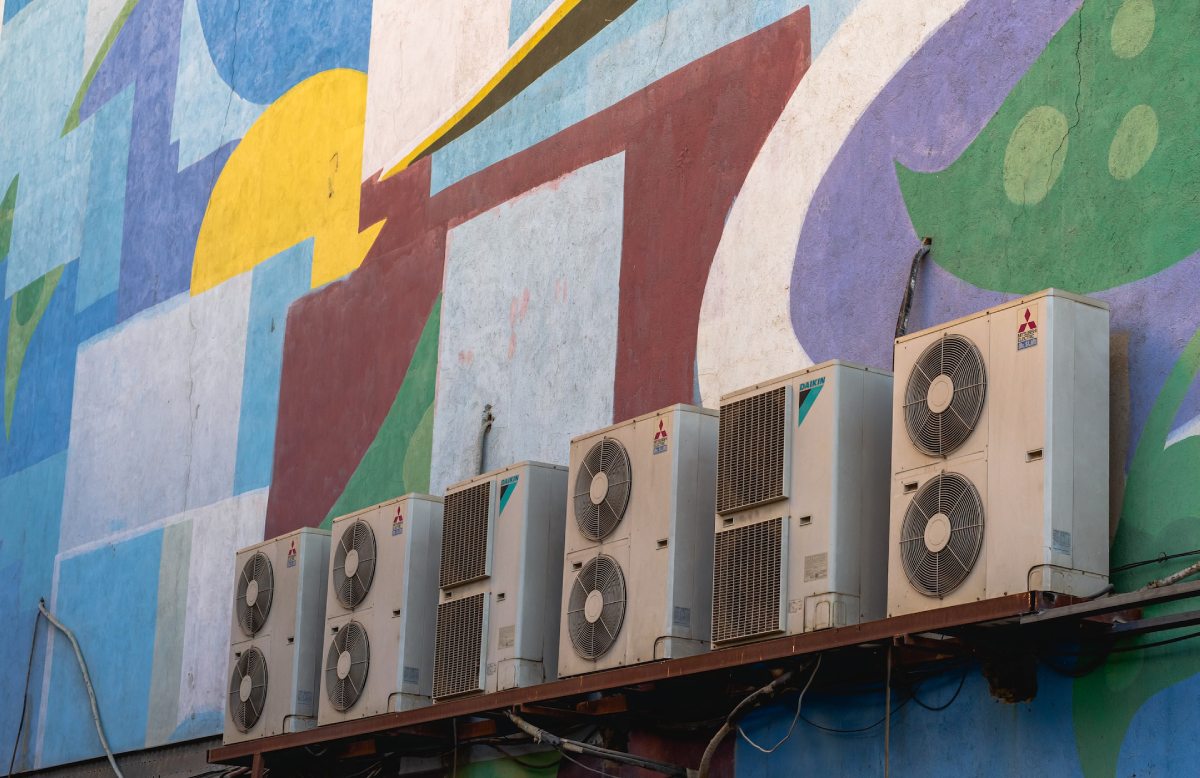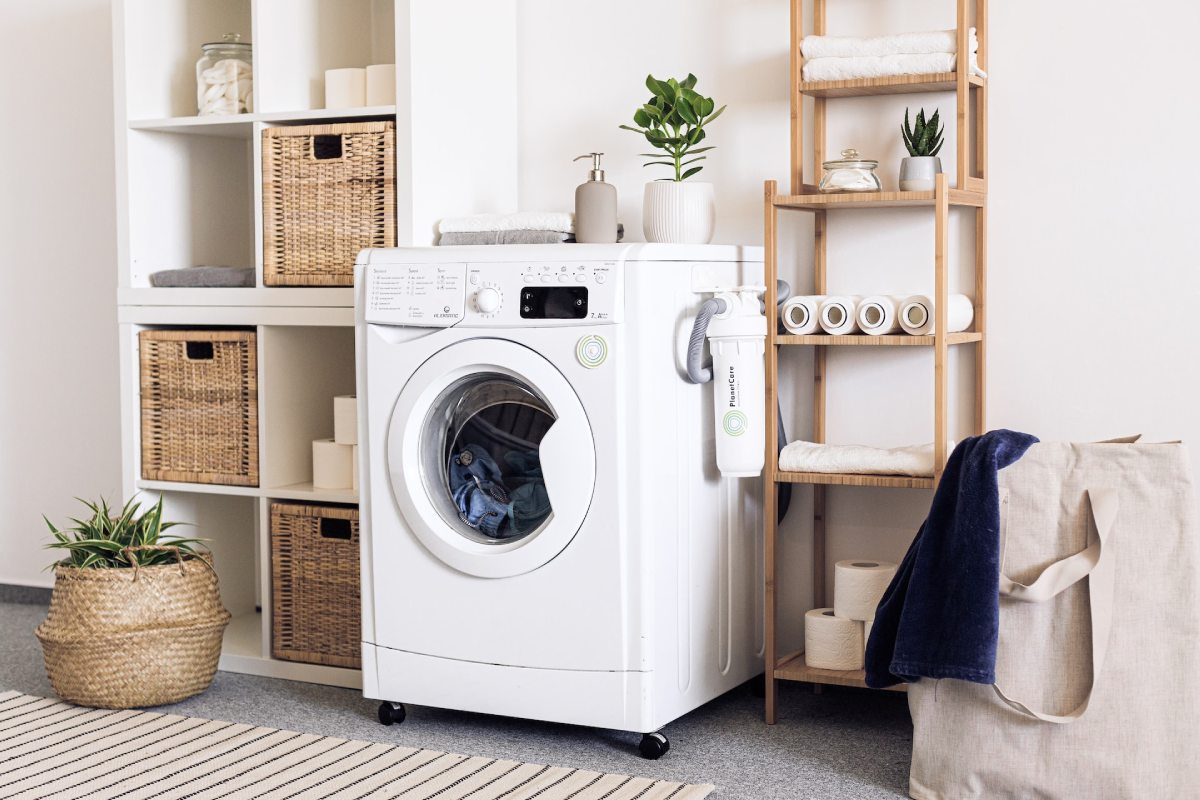Australia is a high-income country with an estimated annual GDP of $1.71 trillion and a per capita income of $64,960 in 2023.1

The country has a well-developed electronic household appliances market. Analysis of the household appliances statistics in Australia reveals high market penetration and modest market growth levels.
Annual revenue from the Australian household appliances market is $5.7 billion as of 2023.2 The annual growth forecast for the next five years (2023 to 2028) is predicted to be around 4.86%.
Despite its small population of 25.69 million, Australia has a rising disposable income which points to an encouraging growth outlook for advertisers in the electronics and home appliances sector.3
What are the key trends behind this growth and market expansion? Who are the main players in the Australian household appliances market? How does it compare to other international markets? What are the global market trends?
This in-depth review of the Australian electronic and home appliances market answers these questions.
Table of contents:
- Electronic and Household Appliances Market Size and Statistics in Australia
- Australian Household Appliances Market Growth and Trends
- The Impact of COVID on the Household Appliance Market
- The Role of eCommerce in the Australian Appliances Market
- Major Trends Shaping the Household Appliances Market in Australia
- Key Takeaways
- References
Electronic and Household Appliances Market Size and Statistics in Australia
The entire household appliance market in Australia was projected to reach $12.87 billion in 2023.4 The market is made up of around 9 million households. The average Australian household has at least three major appliances.2
Each Australian household generates an estimated $516.59 in revenues for the industry in 2023. Total volume of units moved is above 30 million and this number is expected to reach 34.5 million units by 2028.2
With a total value of $3.36 billion, major appliances such as refrigerators, air conditioners, and washing machines form the largest segment within the household appliances market. Total market revenue currently stands at $5.50 billion in 2023.
By 2028, this figure is expected to cross $6.95 billion, given the forecasts of a compound annual growth rate (CAGR) of 4.86%. This is slightly below the global household appliances market forecasts, currently pegged at 7% CAGR between 2021 and 2025.5
It is also worth mentioning here that the appliances industry in Australia is a major employer with more than 14,800 jobs created.4
Australia’s Position in the Global Electronic Household Appliances Market
The global market value of the household appliances market was $690 billion in 2023, and is expected to grow at a CAGR of 4.84% between 2023-2028, indicating significant consumer demand.2 This market growth is fueled primarily by rapidly expanding markets in Asia, Africa, and South America.
In the household appliances market, domestic market size is usually determined by factors like population and per capita income. Although Australia has a highly developed economy with one of the highest per capita incomes in the world, it also has a relatively low population.
China, with its growing economy and 1.4 billion population, leads the tables with nearly 18% of the total global market size (approximately $153 billion) in the global market.2 It is followed by other major economies such as the US (12%), Japan (8%), South Korea (7%), and Germany (5%).6
These are all markets with a total consumer base that is at least double the size of the Australian market, while their per capita incomes are comparable to those of Australia. However, Australia should easily slot into the top 15 global markets for electronic and household appliances.
Australian Household Appliances Market Growth and Trends

In many ways, Australia is a unique nation in the world. It is simultaneously a vast isolated continent and a small, wealthy population. The population density is among the lowest in the world and concentrated heavily along its coast.
Perhaps the most defining feature of the country that affects its consumption trends in the appliances market is its climate. Australia is the driest inhabited continent on Earth.7 The climate in Australia is generally warm and dry. Some regions have very arid, desert-like conditions and temperatures that can top 50°C.
Australia is also a dusty place, with dust storms arising from its deserts being a fairly common phenomenon.
Quite naturally then, cooling and cleaning are among the topmost priorities for Australian consumers.
Be it air conditioners to beat the summer heat, or refrigerators to prevent foods from spoiling, or vacuum cleaners to take care of dust, temperature control and cleaning appliances rank high on the list of Australian households. We look at these numbers in more detail below.
Household Appliance Ownership Trends in Australia
A 2023 survey of more than 1,600 Australian residents identified that refrigerators and washing machines as the two most popular appliances among consumers.8 The refrigerator segment reported annual revenues in excess of $980 million in 2023.9
Volume growth is somewhat stagnant, however, at 0.2% and around 1.6 million units each year. Nearly 88% of Australian households own a refrigerator, indicating high market penetration.9
The other widely used appliances found in more than 80% of Australian homes include washing machines (87%), vacuum cleaners (85%), microwaves (84%), and toasters (82%).
Nearly 75% of Australian households have some form of cooling system.10 Of these, nearly 50% used reverse cycle air conditioners while the remaining used a form of evaporative cooling.
The Major Players in the Australian Home Appliances Market
The Australian electronics and household appliances market is highly competitive, with multiple international brands and a few homegrown companies in the mix. Instead of a single brand dominating many segments, we have a diverse array of segment leaders.
Samsung Electronics and LG are two South Korean brands that need no introduction. These multinational behemoths manufacture everything from refrigerators to air conditioners, ovens, washing machines, TVs, mobile phones, and other consumer electronic products. Both Samsung and LG electronics have a significant presence in Australia.
Whirlpool is one of the largest appliance manufacturers in the world. The Benton Harbor, Michigan-based company has a significant presence in the Australian market. In addition to the American multinational, Electrolux (Sweden), Bosch (Germany), Fujitsu and Panasonic (Japan) rank among Australia’s top appliance brands.
The local brands in this highly competitive market include Breville, an Australian manufacturer specializing in small home appliances. The 90-year old company is popular for its blenders, coffee machines, toasters, and microwaves. Although it markets its products to over 70 countries, Australia remains its main market.
Reader’s Digest conducts an annual survey about the most trusted brands in all major segments of the home appliances market. According to the latest survey results, the following are the major companies or appliance brands most trusted by Australians:
- Fujitsu (air conditioners)
- Breville (small appliances)
- Samsung electronics (refrigerators)
- Bosch (washing machines)
- Fisher & Paykel (dishwashers)
- Panasonic corporation (microwaves)
- Dyson (vacuum cleaners)
- Westinghouse (ovens). 11
The Impact of COVID on the Household Appliance Market
The outbreak of the COVID-19 pandemic had a significant impact on all walks of life. Across the world, consumer habits changed drastically as the pandemic triggered lockdowns, travel restrictions, and created other unprecedented socio-economic challenges.
The electronics and appliances sector experienced an increase in demand in this period, with the global sales of household appliances witnessing an 8% increase in 2021.12 There was a 20% increase in the demand for large appliances and a 25% increase in demand for small appliances when compared to pre-COVID levels.
In Australia, the increased in demand for consumer electronics caused supply chain disruptions which resulted in a shortage of appliances, particularly fridges and freezers, in late 2020.13
Several reasons have been cited for the surge in demand for appliances across the globe.
Lockdowns forced consumers to spend more time at their homes. As other entertainment avenues and expenses decreased, it created a surplus of disposable income in the hands of many consumers. Many buyers used those funds to upgrade their existing appliances or add new ones to their homes.
The virus also increased the focus on indoor air quality. The urgent need for air filtration and other features resulted in a spike in consumer demand for air conditioning and filtration systems.
Another enduring impact of the pandemic was the rise of eCommerce in general as people preferred to shop online rather than risk venturing outdoors. The home appliance segment too, benefitted from this trend.
The Role of eCommerce in the Australian Appliances Market
The eCommerce market in Australia is expected to generate $35.18 billion in revenue in 2023.14 Out of this, the household appliances segment will account for $1.13 billion.15 This figure is projected to rise significantly in the coming years, with a CAGR of 13.1% until 2027.
In the pre-pandemic days, online shopping accounted for around 9% of the total retail shopping in Australia. By 2021, this share had increased to 14%, representing an increase of more than 50% in this distribution channel.16
Over 73% of Australian customers these days use multiple channels - physical stores, websites, apps, social media - for their shopping needs. For an in-depth look at the latest trends in this rapidly growing market, refer to our guide to online shopping statistics in Australia.17
Currently, nearly a quarter of the sales in the Australian household appliances market are generated online. This could increase to 32% within the next four years, if projections of an 8% CAGR hold true.
Consumers in Australia have access to several online platforms that specialise in household appliance sales and delivery. These include Amazon.au, Appliances Online, The Good Guys, Best Buy, eBay, Betta Home Living, and David Jones.
Major Trends Shaping the Household Appliances Market in Australia

Despite considerable saturation and penetration, the Australian household appliance market is still showing healthy long-term growth levels. The current trajectory of the appliances market is driven by several factors, including:
A Growing Population
The Australian population is still growing, albeit at a rather slow pace. After a dip during the COVID-19 pandemic, the population is expected to steadily increase to 29.9 million by 2033, and eventually reach 39 million by 2061.18
Household numbers could increase from 9.6 million to 13.2 million by 2041.19 With any increase in the population and number of households, we can expect a growth in demand for home appliances.
For comparison, Japan is the world’s third largest home appliance market behind China and the US. The country also has five times the population of Australia. However, the Japanese population has been on a consistent decline since 2010.20 Similarly, other major home appliances markets such as China,21 South Korea,22 and Germany23 are also struggling with declining populations, making Australia a lucrative market with good growth potential.
Climate Change and Global Warming
Along with Canada, Greece, and the US, Australia has witnessed several devastating wildfire seasons over the last two to three years.24 The ongoing climate crisis and global warming is recognized as the reason for warmer temperatures that increase the risk of such fires.
Reports emerged as early as 2014 about rising air conditioner usage owing to hotter summers.25 In 2022, ABC News highlighted the changing habits of Australians regarding the use of air conditioners and air purifiers. 26
At the current rate of progression of climate change, many regions like the Northern Territories could witness dangerous levels of summer temperatures.27 The demand for air conditioners and other cooling appliances will only grow as time goes on.
Soaring Energy Costs and Sustainability
Since 2010, the cost of electricity in Australia has increased by 63%.28 The fact that this is after adjusting for inflation is even more startling. Australians pay significantly more for their power consumption than consumers in many parts of the world.
Heating and cooling appliances consume nearly 40% of the total energy used in an Australian household.29 The other appliances account for another 25% of energy consumption.30 There is a clear demand in the market for appliances that consume/waste less energy or energy efficient appliances.
On top of that, the country also faces a long-term issue of acute water shortages.31 Washing machine designs that consume less water are essential in a country where many smaller cities already face the threat of total shutdown of their drinking water supplies.32
Increasing Push Towards Home Automation
There are over 25 million active internet users in the country. Australia ranks high on internet penetration with 96.2% of the population having access to the internet as of 2023.33
The average Australian home had around 17 connected devices in 2017.34 By 2021, that figure rose to 20, with forecasts predicting a further increase to 33 in 2025 during the forecast period.35
With smart speakers such as Google Home and Amazon Echo, users can control their lighting, indoor temperature, and even order items when stocks get low in their connected refrigerators.
Apart from the advantage of convenience, smart homes also provide new and innovative ways to improve energy efficiency.
The Australian smart home appliance market size is growing at a steady clip due to the increasing demand from consumers. From an estimated $2.98 billion in 2022, it is expected to reach $5.31 billion in 2027, at a CAGR of 10%.36
Key Takeaways
The Australian consumer and home appliances market growth story looks optimistic in the near to medium-term future. There are significant growth opportunities for interested brands, especially in the eCommerce segments that received a shot in the arm during the COVID pandemic.
However, the market faces stiff challenges from emerging threats such as increasing summer heat, rising energy costs, and severe water shortages. Manufacturers have to put sustainability, efficiency, and connectivity at the forefront of their design efforts to succeed in Australia.
Furthermore, omnichannel is the way to go as far as marketing is concerned in the appliance and electronics segment here. With more than 75% of consumers preferring to connect with their favourite brands across both offline and online channels, there seem to be few other options for marketers. Market dynamics and supply chain analysis are critical to succeed in this space.
For advertisers interested in the Australian electronics and household appliances market, Commission Factory offers the chance to reach a wide audience. Our platform connects over 750 of the top global and Australian brands with some of the best affiliate marketers in the region.
Our feature-packed platform offers users a bird’s eye view of all their marketing campaigns with reliable and accurate tracking tools. With real time reporting and sophisticated invoicing and payroll tools, advertisers can enjoy full transparency and control over every aspect of their ad campaigns.
Connect with the Commission Factory team to learn more about how we help brands build and grow their affiliate marketing strategies.
References
- Australia Datasets | International Monetary Fund
- Household Appliances Market Australia | Statista
- Population Growth in Australia | World Data
- Household Appliance Wholesaling in Australia Market Report | Ibis World
- Global Household Appliance Markets Trends and Strategies | The Business Research Company
- Top 5 Countries in Retail Household Appliances Market Size | Global Data
- An evaluation of Australia as a major source of dust | Earth-Science Reviews
- Household Appliance Ownership Australia | Statista
- Refrigerators - Australia | Statista
- Sources of energy used by households | Australian Bureau of Statistics
- Most Trusted Appliance Brands Australia | Reader’s Digest |
- Household appliances increase in demand during crisis | GFK
- Australia’s Appliance Shortage | Choice
- eCommerce Australia| Statista
- Furniture and Appliances Market Australia | EcommerceDB
- How eCommerce Is Disrupting Traditional Retail in Australia| JLL
- Key eCommerce and Online Shopping Statistics in Australia in 2023 | Commission Factory
- Population to Reach 30 Million Two Years Later Than Expected | Sydney Morning Herald
- Household and Family Projections Australia | ABS
- Japan’s Shrinking Population | Newsweek
- China’s Population Is Shrinking | CNN
- Korea’s Birth Rate Sinks to Fresh Record Low as Population Crisis Deepens | Guardian
- Germany’s Population in Crisis | ABC
- Australia Bushfires | We Forum
- Australia’s Rising Air Con Use Makes Us Hot and Bothered| The Conversation
- The way we use air conditioning is changing | ABC News
- Rising Heat Threatens Australia's Labour Capacity in the Northern Territory | ABC News
- Why is Electricity so Expensive in Australia? | Glenco
- YourHome.Gov | Heating and Cooling
- YourHome.Gov | Energy
- Australia Water Crisis | Bloomberg
- One of the Biggest Countries in the World Is Running Out of Drinking Water | We Forum
- Digital 2023 Australia | Datareportal
- The average Aussie home has 17 connected devices | Sydney Morning Herald
- Internet Connected Devices Per Home Australia | Statista
- Australia Smart Home Market Size| Research and Markets


